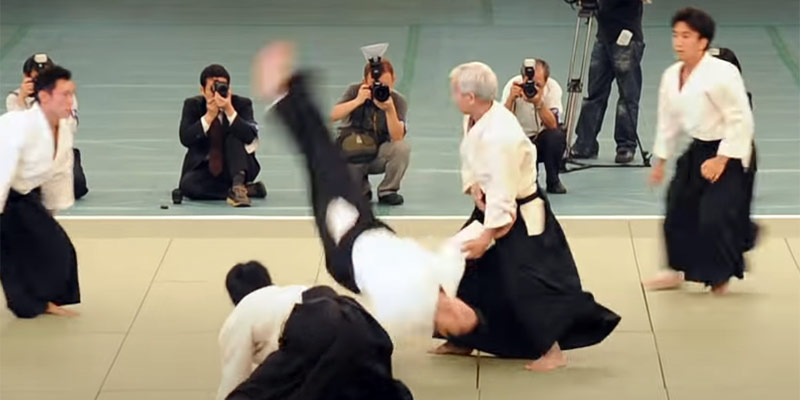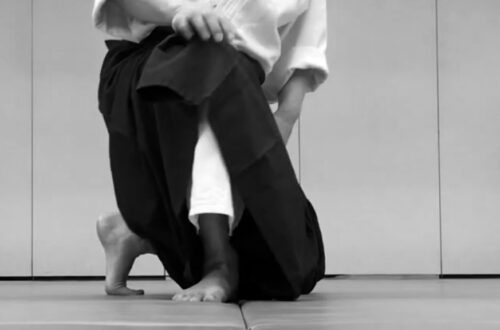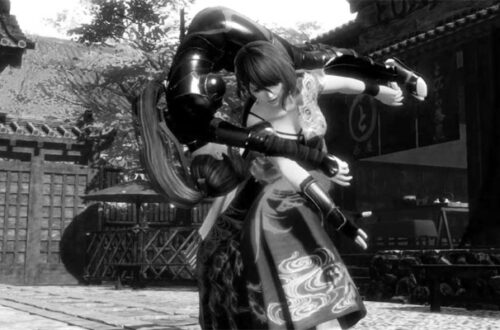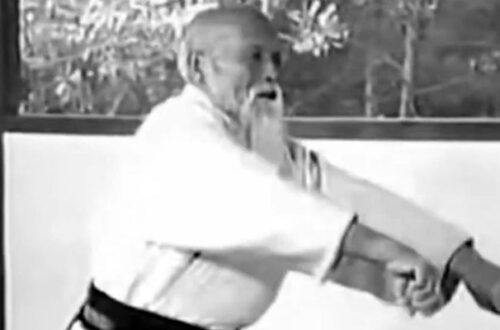
Randori: The Heart of Aikido’s Dynamic Training
Randori 乱取り is a dynamic training exercise practiced in various Japanese martial arts, including Judo and Aikido. The first character, ran 乱, means “disorder” or “chaos,” while dori 取り means “taking” or “capturing.” The earliest recorded use of the term dates back to the military manual Koyo Gunkan 甲陽軍鑑 during the Edo period, where it referred to raiding an enemy territory to seize goods.
In martial arts, randori involves facing one or multiple attackers in an unpredictable and dynamic setting, unlike pre-set attack-defense sequences such as kumite 組手 in Karate or kumijo 組杖 in Aikido. Randori is especially common in Judo. Out of its three technique categories – throwing techniques 投げ技, grappling techniques 固め技, and striking techniques 当身技 – the first two are allowed in randori. Striking techniques are considered dangerous and are practiced only in forms.
In Aikido, randori, or more commonly as Jiyu waze自由技 (free style techniques), can be hitori gake 一人掛け (one-person attack), futari gake 二人掛け (two-person attack), sannin gake 三人掛け (three-person attack), or simply taninzu gake 多人数掛け (multi-person attack), depending on the practitioner’s skill level. Some consider randori is an extension of jiyu waze, which brings the practice closer to a real-life combat scenario.

Doshu Moriteru Ueshiba performing at the 48th All Japan Aikido Demonstration
Randori is challenging, as it requires the defender to be aware of and respond quickly to multiple attackers. It is usually practiced by more advanced practitioners and helps to develop their ability to adapt and respond effectively to different attack scenarios. It also helps improve their situational awareness and decision-making skills, as well as their timing, coordination, and tactical skills in a realistic simulation of a real-world attack scenario where multiple attackers may be present. Additionally, it can help practitioners develop a sense of confidence and calmness and the ability to stay focused and composed even under stressful circumstances.

Shodokan 昭道館 Aikido randori competition
In Aikido, randori is normally performed in tachi waza 立ち技 (standing techniques), but it can also be performed in suwari waza 座り技 (seated techniques), or even with armed attackers, though less commonly. While Aikido generally does not have competition, the Tomiki 富木 style, known as Shodokan 昭道館 Aikido, incorporates randori competitions, where two practitioners face off. These competitions take the form of tanto randori 短刀乱取 (knife randori) or toshu randori 徒手乱取 (empty-handed randori). Competitors must adhere to safety and fairness rules, such as limiting attack types, setting time limits, and awarding points for successful techniques. Other Aikido styles practice it in day-to-day training or as part of advanced grading.
In conclusion, jiyu waza / randori is a vital component of Aikido training, both mentally and physically. While formats and rules may vary depending on the style, it remains an essential part of training that helps practitioners develop the necessary skills for self-defense and effective martial arts practice.
Author’s Note: We appreciate your readership! This article serves as a preliminary introduction to the subject matter. While we aim for accuracy, we cannot guarantee the content’s precision and it may contain elements of speculation. We strongly advise you to pursue additional research if this topic piques your interest. Begin your AikidoDiscovery adventure! 🙂




